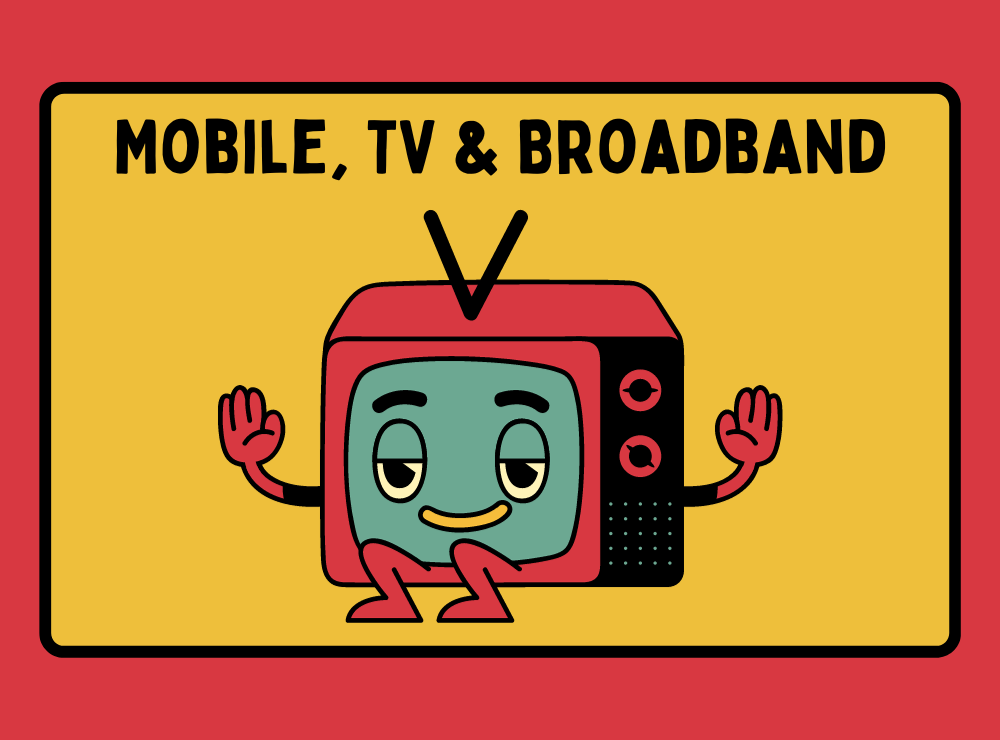Mobile:
1. Mobile Networks: Mobile communication relies on cellular networks, which use a system of cell towers to provide wireless coverage. These networks operate on different generations, such as 3G, 4G, and 5G, each offering varying speeds and capabilities.
2. Smartphones: Smartphones are multifunctional mobile devices that combine phone, internet, email, messaging, and apps. They have become ubiquitous for both personal and professional use.
3. Mobile Plans: Mobile service providers offer a range of plans, including prepaid, postpaid, and data-only plans, with varying levels of talk time, text messages, and data allowances.
4. Mobile Apps: Mobile apps enhance the functionality and utility of smartphones, providing access to a wide range of services, from social media and games to productivity tools and online shopping.
TV (Television):
1. Types of TV Services:
· Cable TV: Delivered via cable networks, offering a wide selection of channels and on-demand content.
· Satellite TV: Broadcast via satellite signals, providing access to a broad range of channels.
· IPTV (Internet Protocol Television): TV service delivered over the internet, often bundled with broadband services.
· Over-the-Air (OTA) TV: Free TV broadcasts received via antennas, offering local and network channels.
2. Smart TVs: These internet-connected televisions allow users to stream content from online platforms like Netflix, Hulu, Amazon Prime Video, and YouTube.
3. Streaming Services: The rise of streaming platforms has transformed how people consume content, with services like Netflix, Disney+, and HBO Max offering a vast library of shows, movies, and original content.
4. Live TV: Live TV services, often delivered over the internet, offer real-time access to news, sports, and events, making them popular alternatives to traditional cable or satellite TV.
Broadband:
1. Broadband Types:
· DSL (Digital Subscriber Line): Delivers internet access over traditional telephone lines.
· Cable Broadband: Uses cable television infrastructure to provide high-speed internet.
· Fiber Optic Broadband: Employs fiber optic cables for ultra-fast, high-capacity internet connections.
· Wireless Broadband: Utilizes wireless technology, such as 4G/5G, for internet access, often in areas without wired connections.
· Satellite Broadband: Provides internet access via satellite signals, suitable for remote locations.
2. Speed Tiers: Broadband plans come in different speed tiers, typically measured in megabits per second (Mbps) or gigabits per second (Gbps). Faster speeds allow for smoother streaming, online gaming, and data-intensive activities.
3. Broadband Providers: Various companies and ISPs (Internet Service Providers) offer broadband services, with competition leading to a variety of pricing options and packages.
4. Home Networking: Wi-Fi routers and network equipment enable multiple devices to connect to a broadband connection within a home or office.
5. Business Broadband: Many businesses require dedicated and higher-speed broadband connections to support their operations, including data transfer, video conferencing, and online transactions.
6. Broadband Packages: ISPs often bundle broadband with TV and phone services, offering cost savings for customers who opt for multiple services.
Mobile, TV, and broadband services have become integral to daily life, enabling communication, entertainment, and access to information. The continuous evolution of these services, driven by technological advancements and changing consumer preferences, shapes how we connect and engage with the digital world.

















